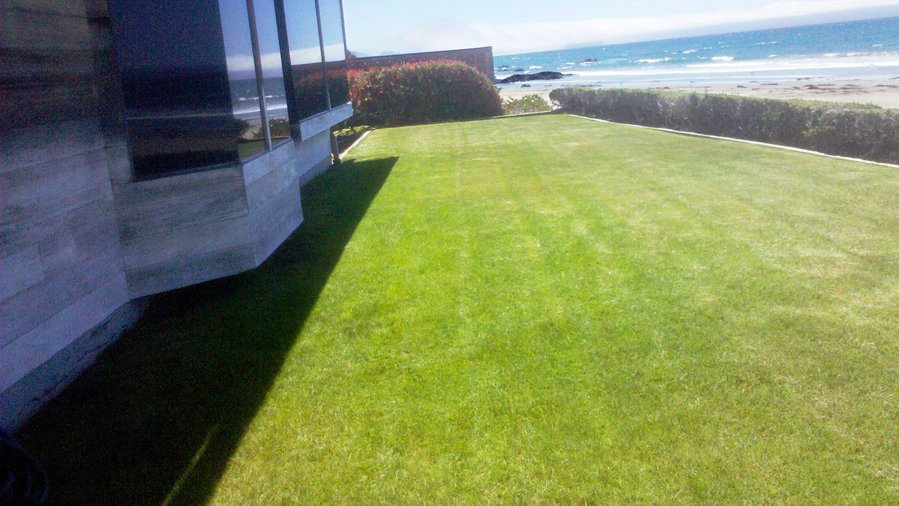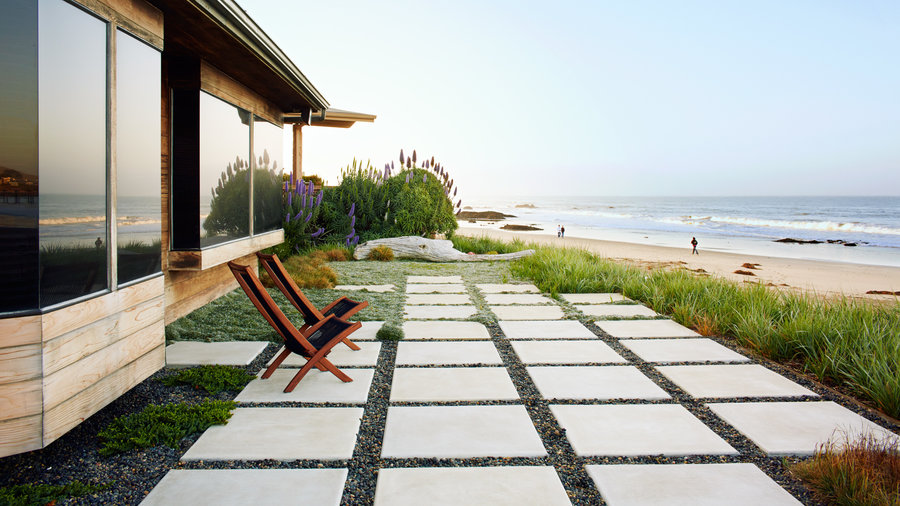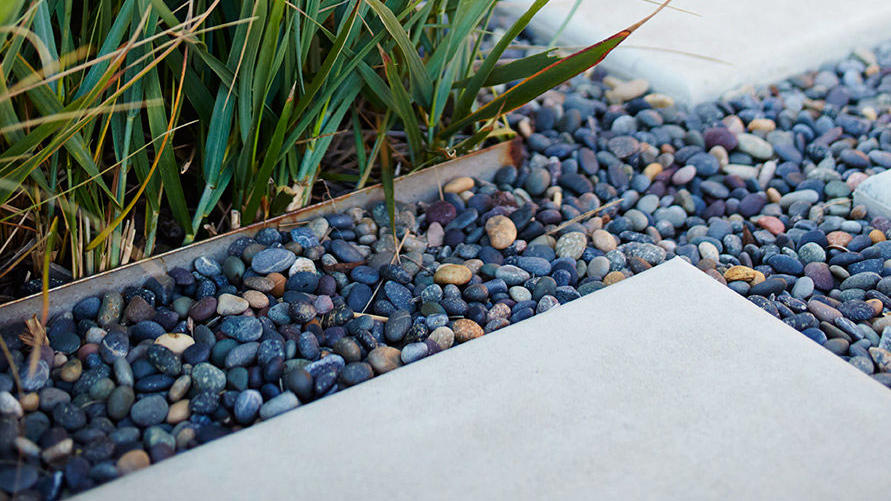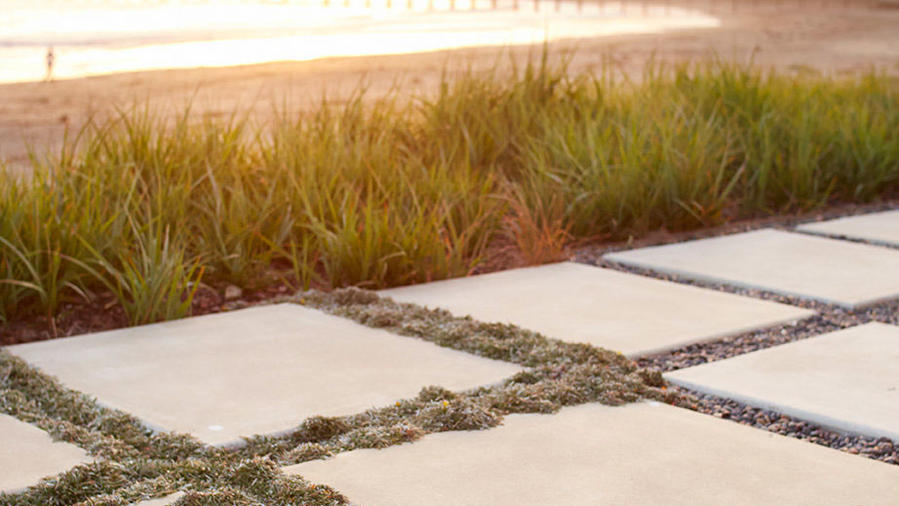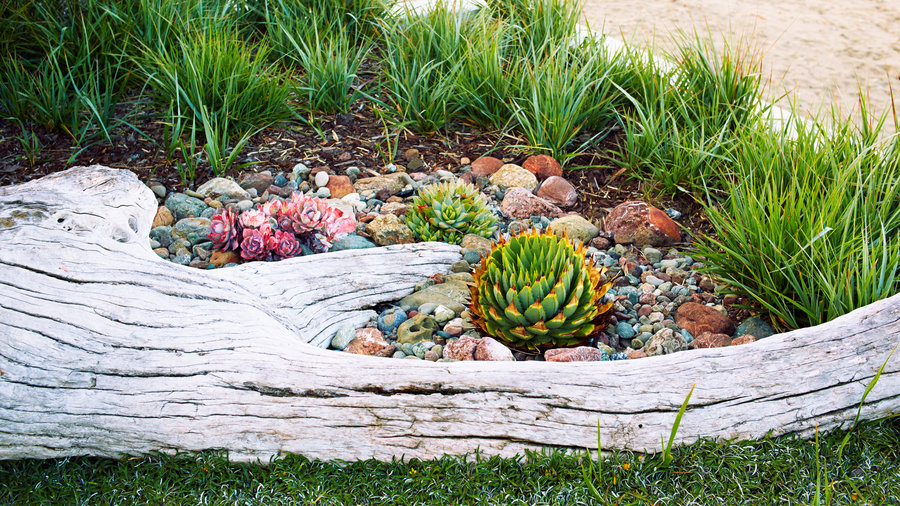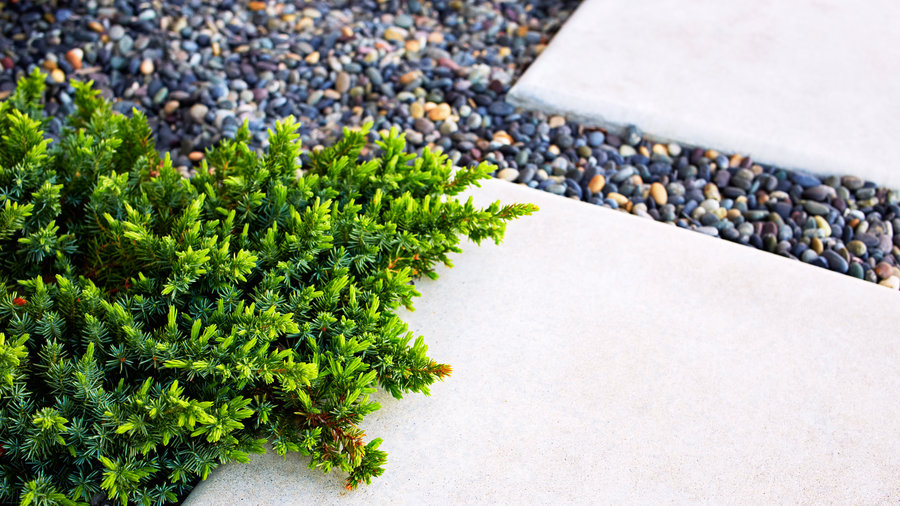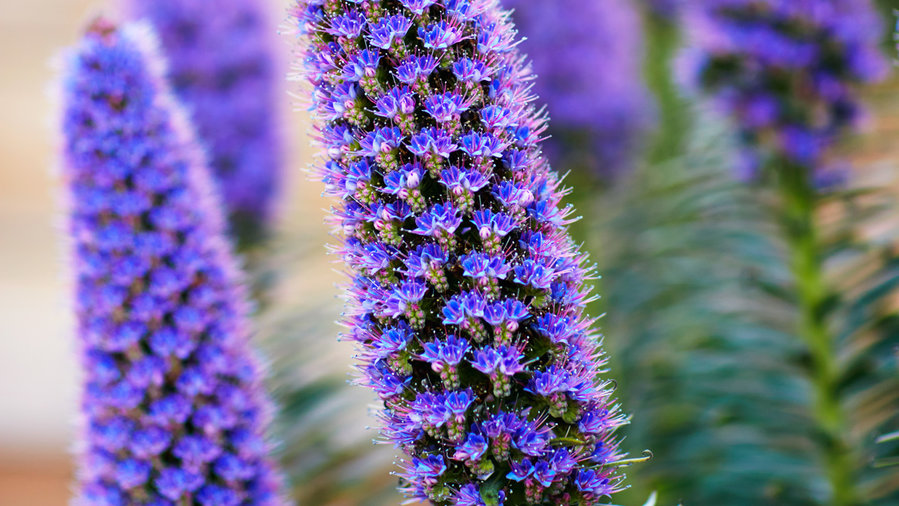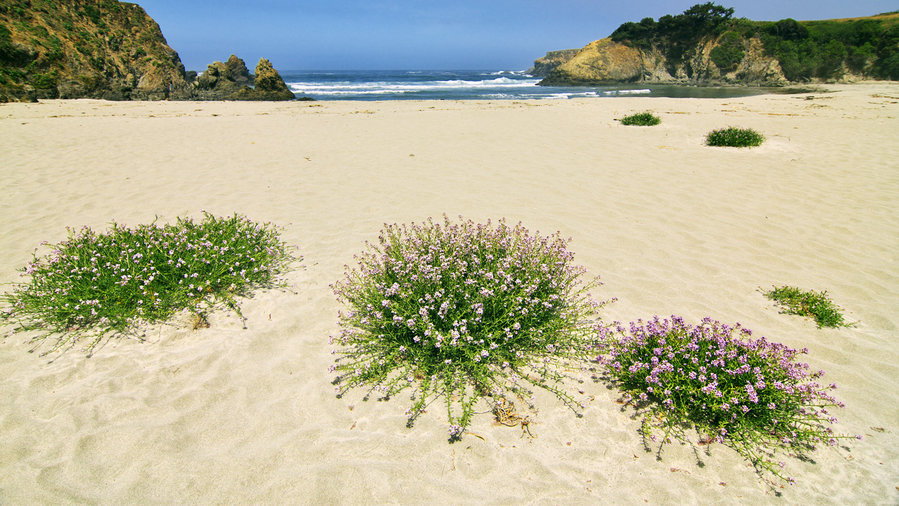Chris Leschinsky
Before
The lawn at Gordon and Julia Held’s beachfront home in Cayucos, California, never felt quite right. The grass guzzled water, and looked out of place against the sand and surf. Seeking a lower-maintenance alternative, the couple hired landscape architect Jeffrey Gordon Smith. His solution: to turn the 20- by 60-foot yard into what he calls a “soft hardscape,” combining pavers with a “wind-whipped plant palette.”
Chris Leschinsky
After
With their Mediterranean colors, the native and adapted plants he chose blend naturally into the landscape, and require less attention than a lawn. “Now we spend less time looking down at weeds that need pulling and more time looking at the ocean,” says Gordon Held. “We feel a part of the beach scene.” What’s more, with the new design, “The garden uses 10 percent of the water it once used—a savings of about $50 per month.” Design: Jeffrey Gordon Smith Landscape Architecture, Baywood Park, CA; jgsdesigns.com
Even the landlocked can adopt the low-water elements from the Helds’ yard. Click ahead for the designer’s top tips for how to try this at home.
Chris Leschinsky
"Sandy" pavers
Acid-washed to add texture, the concrete pavers “feel like sand underfoot,” Smith says—perfect for the couple’s tai chi sessions. The tiles top a 6-inch sand base; spaces between them keep water from running off.
Chris Leschinsky
Grass border
Leymus condensatus ‘Canyon Prince’—native to Southern California—defines the patio edge, and in summer is topped with golden seed heads. “The grass flows with the wind and looks at home in the coastal setting,” Smith says.
Chris Leschinsky
Secret garden
A piece of driftwood, used as a bench, embraces a succulent garden made for close-up viewing. Spiral aloe (A. polyphylla) mingles with Echeveria ‘Afterglow’. Tufts of blue moor grass (Sesleria caerulea) fan out along the edge like sea anemones.
Chris Leschinsky
Silvery carpet
Dymondia margaretae grows between pavers, giving way to Mexican pebbles. Planted from flats, the groundcover took six months to fill in. Juniperus rigida conferta ‘Blue Pacific’ laps at pavers nearest the house.
Chris Leschinsky
Echium candicans
Big, mounding Pride of Madeira shrubs (Echium candicans) serve as absolute magnets for honeybees. While their large span aren’t ideally suitable for containers, their purple blooms and poor soil tolerance make them a great pick for both front and backyard gardens.
Andre Gunther
Plant a garden, save an ocean
West Coast cities from San Diego to Portland are encouraging ocean-friendly gardens for all residents, not just those on the beach. The key elements: porous soil, climate-appropriate plants, and permeable paving to soak up or channel rainfall into the soil. Unlike heavily watered and hard-paved landscapes, which can send pollutants into storm drains and, ultimately, the ocean, spongelike gardens prevent runoff. Find more guidelines at surfrider.org, and read up on how you can make your yard both beautiful and environmentally friendly.
